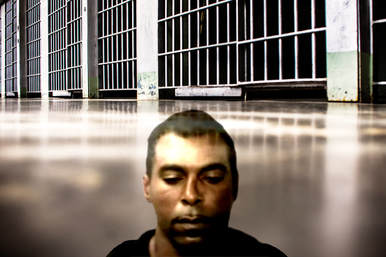California Serial Rapist
Gets Life

Nightmares came true the summer of 2013 in Bakersfield, California. A masked man used terror tactics to sequentially rape three mothers and molest one younger victim.
"This is one of those cases where the public had a right to be fearful," local Sheriff Youngblood said. The crimes occurred in the women's own homes and followed a disturbing pattern. After breaking in, the masked assailant used zip ties to bind the woman—and her child. Then he forced himself on the mother.
"It says to me that he picked victims that had children in the house, because the mothers would do anything to protect these children, and were more compliant," District Attorney Cynthia Zimmer said.
The rapist wore a ski mask, meaning that his identity was kept secret without the help of biological evidence. A breakthrough occurred when a young girl called 911 after freeing herself from her bonds. The rapist fled, leaving his DNA on a zip tie. Detectives had previously collected DNA-tainted items from the other victim’s homes, and now were able to form a complete library of evidence.
Unfortunately, the DNA evidence received by the Kern Regional Crime Laboratory was complex. Like most labs then—and now—their manual DNA analysis was out-of-date. While human review works when a DNA sample only contains two people, it falls short on evidence items that were touched by three or more people. Many objects from crimes contain more than two people’s DNA—including the vast majority of evidence submitted from the Bakersfield rape cases.
Although the lab was in the process of updating their DNA analysis with scientific computers, the need was urgent. A "sadistic monster" continued to prowl the streets.
Thankfully, the crime lab contacted the makers of TrueAllele technology. The TrueAllele computer was able to separate the DNA mixtures from each evidence item. It found the man who was connected to the zip tie, plus dozens of other items left at the scenes—Billy Ray Johnson.
"This is one of those cases where the public had a right to be fearful," local Sheriff Youngblood said. The crimes occurred in the women's own homes and followed a disturbing pattern. After breaking in, the masked assailant used zip ties to bind the woman—and her child. Then he forced himself on the mother.
"It says to me that he picked victims that had children in the house, because the mothers would do anything to protect these children, and were more compliant," District Attorney Cynthia Zimmer said.
The rapist wore a ski mask, meaning that his identity was kept secret without the help of biological evidence. A breakthrough occurred when a young girl called 911 after freeing herself from her bonds. The rapist fled, leaving his DNA on a zip tie. Detectives had previously collected DNA-tainted items from the other victim’s homes, and now were able to form a complete library of evidence.
Unfortunately, the DNA evidence received by the Kern Regional Crime Laboratory was complex. Like most labs then—and now—their manual DNA analysis was out-of-date. While human review works when a DNA sample only contains two people, it falls short on evidence items that were touched by three or more people. Many objects from crimes contain more than two people’s DNA—including the vast majority of evidence submitted from the Bakersfield rape cases.
Although the lab was in the process of updating their DNA analysis with scientific computers, the need was urgent. A "sadistic monster" continued to prowl the streets.
Thankfully, the crime lab contacted the makers of TrueAllele technology. The TrueAllele computer was able to separate the DNA mixtures from each evidence item. It found the man who was connected to the zip tie, plus dozens of other items left at the scenes—Billy Ray Johnson.
"It was the DNA that enabled us to know who raped these women," said Zimmer.
The DNA evidence was presented during trial. Johnson was sentenced to 423 years in prison for 24 charges, including fives rapes as well as several charges of burglary, assault, and false-imprisonment.
Billy Ray Johnson received a sentence of life without parole, plus 432 years to life. The Kern Regional Crime Laboratory now has their own TrueAllele system, which they used to independently verify the connection between Johnson and the crimes. The concordant results gave confirmation—Johnson was connected to the rapes.
One victim said that she believes there is greater justice in the world, now that Johnson is behind bars. And greater justice was made possible through scientific computer analysis.
Billy Ray Johnson received a sentence of life without parole, plus 432 years to life. The Kern Regional Crime Laboratory now has their own TrueAllele system, which they used to independently verify the connection between Johnson and the crimes. The concordant results gave confirmation—Johnson was connected to the rapes.
One victim said that she believes there is greater justice in the world, now that Johnson is behind bars. And greater justice was made possible through scientific computer analysis.
© 2019 Justice Through Science. All rights reserved.

